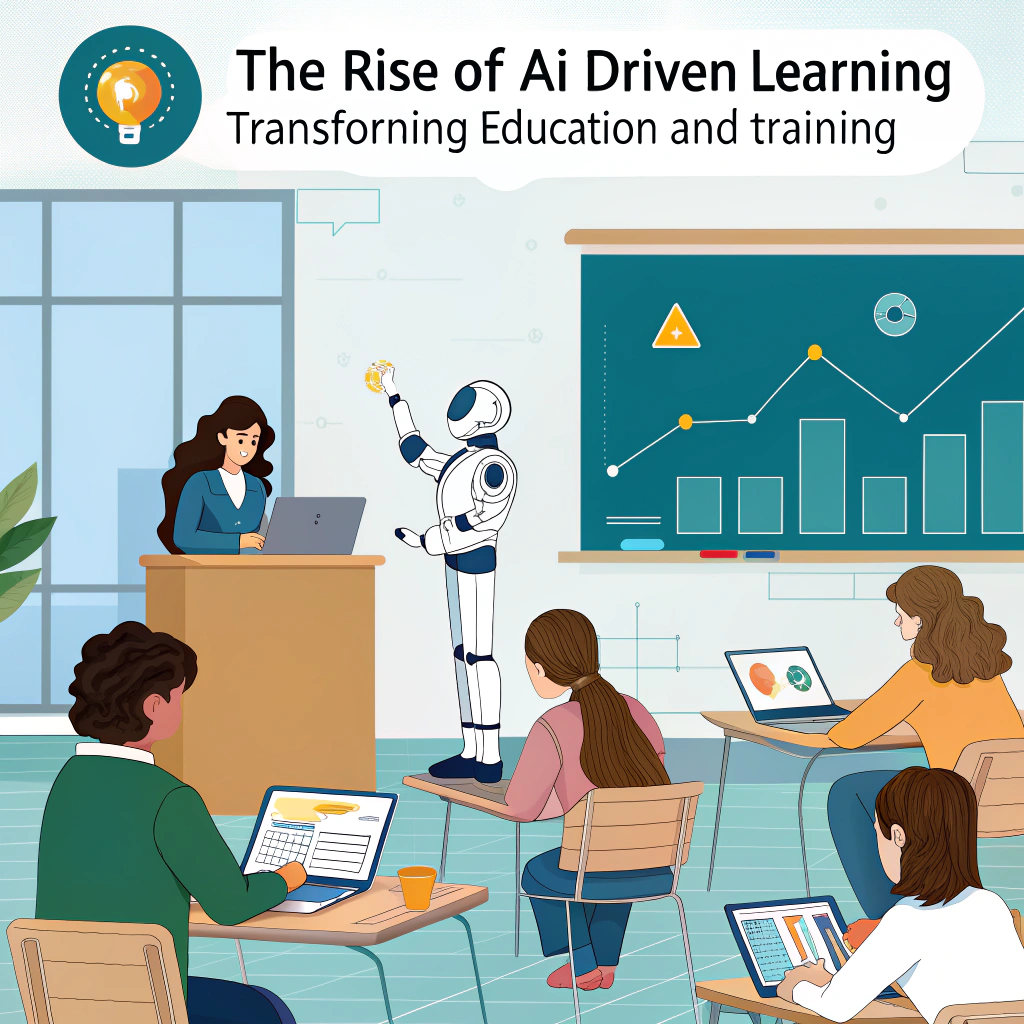Newsletter
Thank you for subscribing.
You have already subscribed.
Posted by - sam pinkman -
on - Jul 15 -
Filed in - Business -
-
30 Views - 0 Comments - 0 Likes - 0 Reviews

In today’s fast-evolving digital landscape, Artificial Intelligence (AI) is redefining how we learn, teach, and train. Traditional models of education—rigid, one-size-fits-all, and slow to adapt—are being replaced by AI-driven learning systems that are personalized, scalable, and deeply data-informed.
Whether in corporate environments or academic institutions, AI is no longer a futuristic concept; it's a practical tool improving learner outcomes and organizational efficiency. But how exactly is it doing this?
One of AI's most significant contributions is personalization. Unlike traditional learning management systems (LMS), AI-powered platforms adapt content in real time based on a learner’s progress, behavior, and preferences. For example, an employee struggling with a technical concept might automatically be assigned a simplified module, while a high-performing student could be challenged with more advanced content.
This type of customization keeps learners engaged, reduces drop-off rates, and accelerates skill acquisition. It also enables inclusive learning by catering to diverse needs—whether someone is a visual learner or needs more time to absorb complex ideas.
AI tools can now generate quizzes, summaries, flashcards, and even full training modules with minimal human input. Platforms like ChatGPT, for instance, can assist educators and L&D professionals in building engaging content in minutes rather than weeks. This dramatically reduces content development costs while increasing speed to deployment—critical in fast-moving industries.
Furthermore, Natural Language Processing (NLP) allows AI to process complex text, translate it into different languages, or simplify it for learners with varying literacy levels. This democratizes access to knowledge on a global scale.
AI doesn’t just deliver content; it analyzes how learners interact with it. Are they rewatching certain videos? Struggling with specific quiz questions? AI systems detect these patterns and provide real-time feedback to both the learner and the instructor.
This immediate insight allows for timely interventions, smarter coaching, and data-driven decision-making. In corporate settings, this also ties into workforce planning—helping leaders understand skill gaps and future training needs.
Scaling traditional learning solutions is costly and time-consuming. AI changes that. Once trained, AI models can serve thousands of learners simultaneously, across geographies and time zones. It’s particularly valuable for startups, SMEs, or educational institutions with limited resources but ambitious growth plans.
The return on investment is tangible: reduced training hours, improved performance, and higher learner satisfaction.
While AI won’t replace educators or trainers, it will undoubtedly augment them. The most effective learning environments of the future will combine human empathy with AI precision—blending personalized content, instant feedback, and mentor-led coaching.
In conclusion, AI-driven learning isn’t just a trend; it's a transformation. Organizations and institutions that embrace it now will be better equipped to foster continuous learning, future-proof their workforce, and close skill gaps faster than ever before.

Our Mission... “To assist disaster survivors by providing a source for them to come together in time of need, to aid in the listing of events, information and other forms of assistance, and continuing support through the recovery process.”

Share this page with your family and friends.